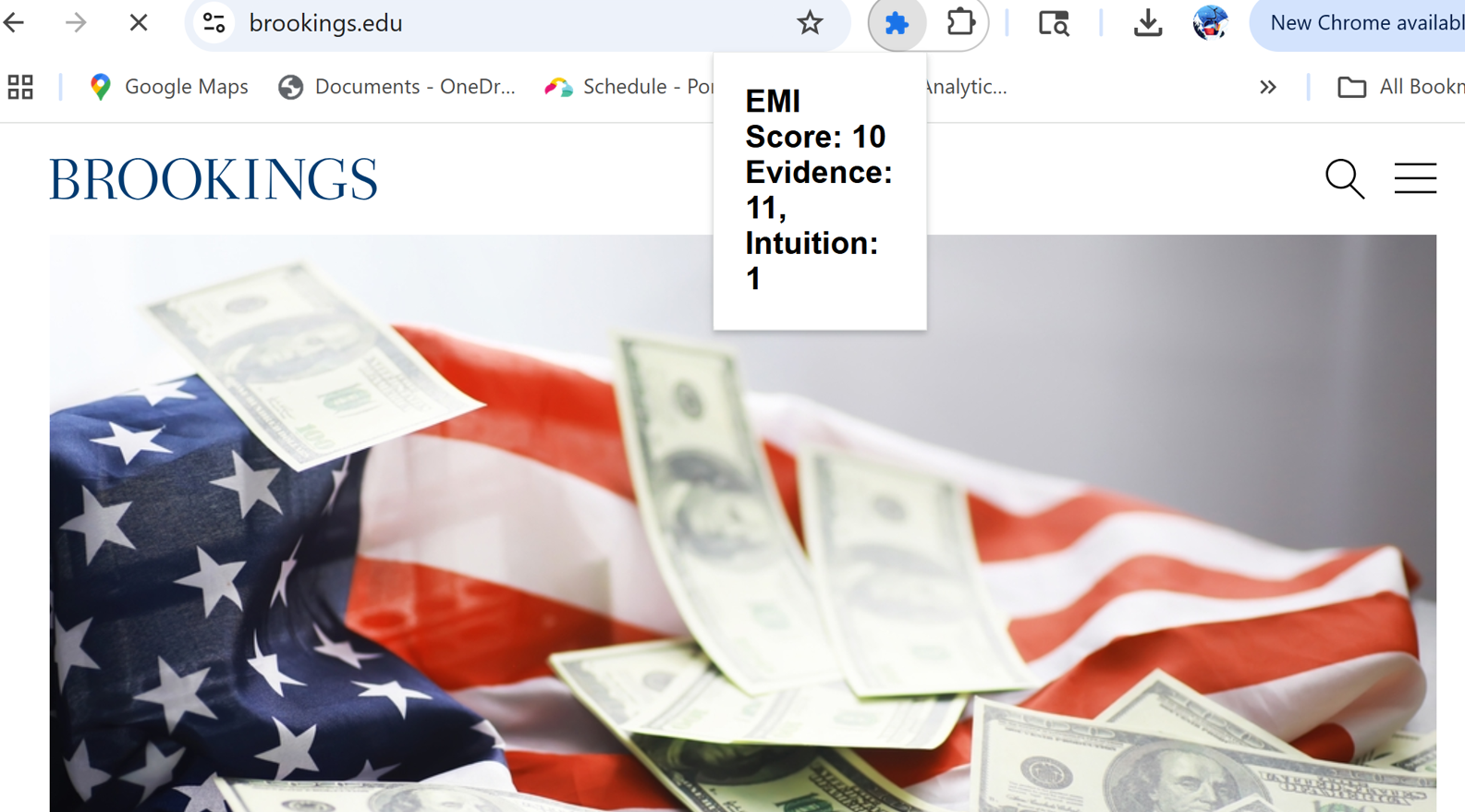What’s Your EMI Score? And Why It Should Matter to Your Brand
A new study in Nature Human Behaviour analyzed 145 years of U.S. congressional speeches using a linguistic framework called the EMI score, short for Evidence Minus Intuition. Here’s the premise:
Language exists on a continuum between two rhetorical styles:
- Evidence-based: Words like fact, data, proof, reason, research, statistics
- Intuition-based: Words like feel, believe, opinion, gut, common sense, guess
The EMI score uses some fancy linguistic math to score any communication with a high EMI being fact-forward, low EMI being gut-driven. So what’s happened in Congress over the last fifty years?
Evidence-based language has plummeted. Shocker, I know. It’s both parties, both chambers. Who cares? At the same time, partisan polarization has surged and legislative productivity has cratered.
Coincidence? When everyone speaks from the gut all the time nobody agrees on reality. And when there’s no shared truth, nothing gets done.
But Isn’t Intuition Good?
Yes, in doses. This isn’t a “good vs. bad” dichotomy, it’s a balance. Productive discourse balances between evidence-based and intuition-based conceptions of truth.
But intuition can’t settle an argument and when everyone leads and closes with conviction you tend to get conflict, not consensus.
Donor Messaging and Intuition
Fundraising has long camped out on the intuition side:
- “You can change a life today.”
- “We believe every child deserves…”
- “Act now — before it’s too late.”
That’s emotional heat. And it has value if it’s not merely empty platitudes and not the entire rationale. Because just like Congress, if all you serve is moral certainty and outrage with no evidence, no progress, no feedback loop, trust erodes. Retention drops and skepticism creeps in. Because donors don’t give because you made them feel angry, they give to feel better, to fix something. And eventually, they expect receipts.
Meet the EMI Chrome Tool (Built in 5 Minutes)
I got curious and built an EMI analyzer as a Chrome extension using GPT — in about ten minutes. It scores any webpage on the evidence–intuition scale based on the same framework used in the congressional study.
Here’s what I found by category along with a screen shot of the plugin scoring this think tank, EMI Score: 10,
| Org Type | Typical EMI Score | Interpretation |
|---|---|---|
| Think Tanks | 8–12 | Evidence-dominant, high credibility |
| Animal/Social Welfare | 2–5 | Emotion-forward, urgency-based |
| Advocacy Groups | 5–8 | Mixed — belief + occasional backing |
 This isn’t a right vs. wrong judgment — but it shows where brands live rhetorically. And doesn’t this match what you’d think and expect? If you’re a fact-based org using all feeling words, that’s a brand-language mismatch. If you’re an emotional appeal org drowning in statistics, same deal.
This isn’t a right vs. wrong judgment — but it shows where brands live rhetorically. And doesn’t this match what you’d think and expect? If you’re a fact-based org using all feeling words, that’s a brand-language mismatch. If you’re an emotional appeal org drowning in statistics, same deal.
What Kind of Truth Does Your Brand Trade In?
Let’s take the EMI lens and aim it at your brand. You can do so for free here in the Chrome extension store, just add EMI Analyzer, go to any webpage and press the button to get your score.
- Are you making a rational case or a moral claim?
- Are you telling donors what you know or what you believe?
- Are you offering proof or just passion?
And then ask: is this what our donors need — right now, for this moment, for this mission?
Kevin
P.S. If you’re at all curious about how to match your message to the person then join our learning session. It’s free, register here.


